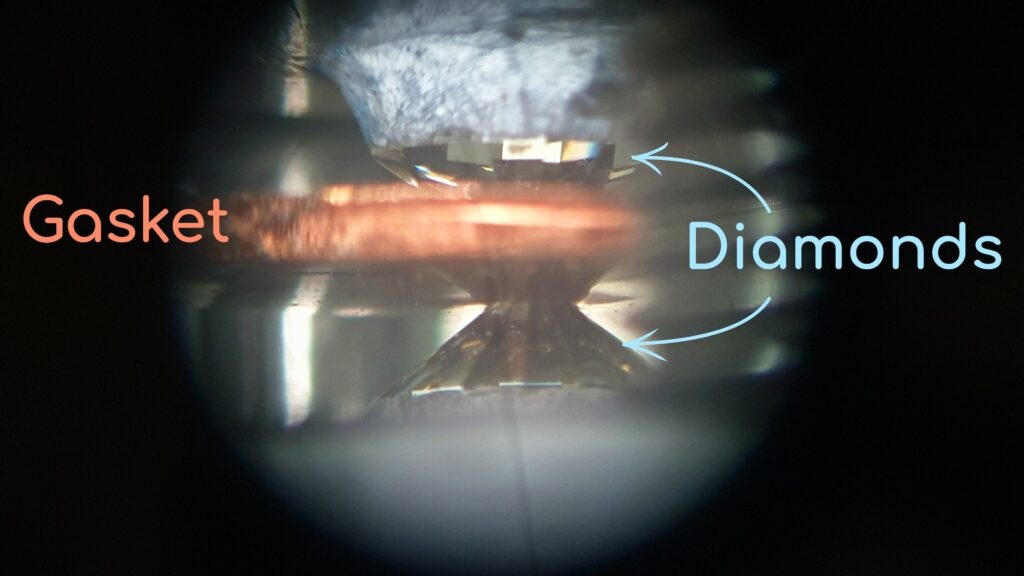EDIT: Nature has retracted the paper already.
Have you heard the news? Scientists have recently claimed to have discovered (again) a material that is a superconductor at room temperature! That's right - a material that can conduct electricity with zero resistance, even in everyday conditions (well, not quite, because it needs some pressure). I say 'again' because this is not the first time that such a claim has been made and later retracted. However, if confirmed, it can be a major breakthrough.
But how did they make this discovery? Well, it all comes down to a little device called a Diamond Anvil Cell.
A Diamond Anvil Cell (DAC) is a small instrument that can apply enormous pressure to small samples of materials. It works by using two small diamonds to squeeze a sample between them, creating pressures that can reach millions of times higher than atmospheric pressure.
In the case of this recent discovery, researchers used a Diamond Anvil Cell to apply high pressures to a sample of Lutetium-based material. As the pressure increased, the material underwent a dramatic transformation, becoming a superconductor at room temperature.
Now, I know what you're thinking - "Diamonds? Pressure? Superconductivity? How does that all work?" Well, let me break it down for you.
Diamond Anvil Cell
Diamonds are some of the hardest and most durable materials on the planet. In a Diamond Anvil Cell, two small diamonds are used to create a tiny chamber that can be pressurized. As pressure is applied, the diamonds are forced together, creating a smaller and smaller space inside the chamber.
This extreme pressure can cause dramatic changes to the materials inside the chamber, such as the Lutetium-based material that was recently discovered to be a superconductor at room temperature.
Many years ago I made a little animation about the mechanism of a diamond anvil cell. There is no better time than this for bringing up my little sketch and show you all how materials can be introduced in this little device to generate huge pressures.
Potential applications
So, what does this discovery mean for the future of technology? Well, it could have pretty significant implications. Superconductors have the potential to revolutionize the way we generate and transmit electricity, making our energy systems more efficient and sustainable.
It could lead to more efficient power transmission and storage, reducing waste and carbon emissions. It could also lead to more powerful and compact magnets, which could have applications in fields such as medical imaging and particle accelerators. In the transportation sector, superconductivity could be used to create more efficient and powerful electric motors, leading to faster and more environmentally-friendly transportation options. Maybe in few years time you ride a levitating train to work.
However, there are still some significant challenges to overcome before we can fully realize the potential of superconductivity. One major obstacle may be the cost and complexity of producing superconducting materials at scale. Lutetium is not precisely one of the most abundant elements on Earth. In addition, there may be questions about the stability and durability of these materials over time, and whether it may be able to be stabilized at room pressure. But despite these challenges, the discovery of a room temperature superconductor would be a significant step forward in our understanding of materials science and the potential applications of superconductivity.
As with any scientific discovery, there is still much to learn about this new material and its properties. More research and testing will be needed, firstly to confirm that the discovery is valid and then to fully understand the potential applications of this room-temperature low(ish)-pressure superconductive material.
In the meantime, we can marvel at the ingenuity of scientists who can use tiny diamonds to create immense pressures and uncover new and exciting discoveries in the world of materials science.

